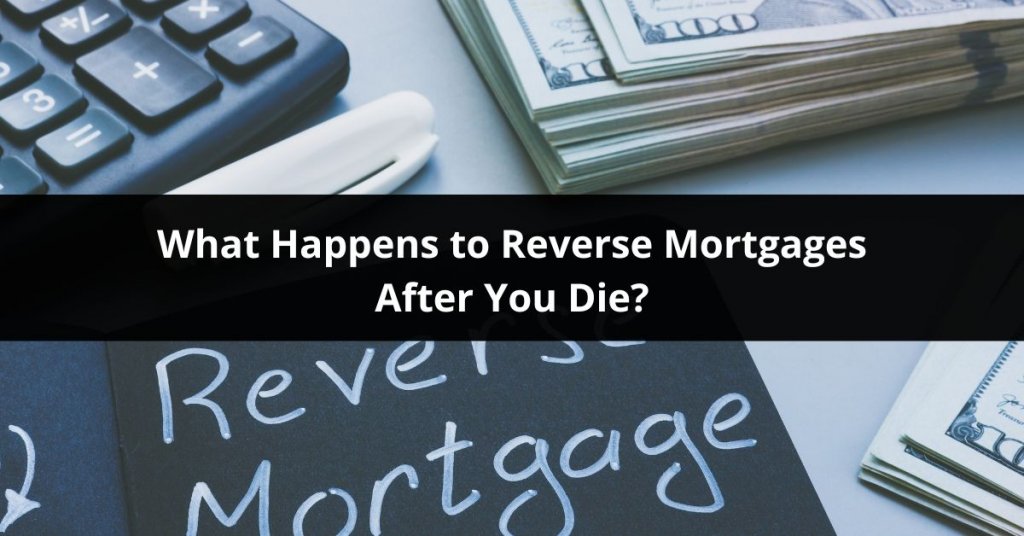What happens with your reverse mortgage after you die depends on if the person you want your house to go to is a co-borrower, a non-borrowing spouse, or an heir. Most of the time, a spouse will keep the home and get to stay in it, but that isn’t always the case. Let’s take a look to see what happens with the reverse mortgage after you die and what that means for each person.
If you are a spouse
With reverse mortgages, there are rules that determine what happens if you lived in the home with your spouse. These rules depend on several factors:
When you co-borrow the loan
Once one of the borrowers dies, the co-borrower will continue to receive the benefits of the reverse mortgage which includes the loan payouts and ability to stay in the home.
The living co-borrower must still pay the property taxes, homeowners insurance, flood insurance premiums, HOA fees, and any other special assessments. If they do not, the loan can go into default, pre-foreclosure or foreclosure. The reverse mortgage will then become due when this person dies.
You can’t outlive a reverse mortgage. As long as you stay current with the above payments and basic maintenance, you can live in the home as long as you want without repaying the loan. However, when you die, the reverse mortgage becomes due.
If you’re not listed on the mortgage
If the homeowner took out the reverse mortgage before Aug. 4, 2014, then the non-borrowing spouse (the one not listed on the mortgage) does not have a guaranteed right to stay in the house. The lender can foreclosure on the home or enter a process called Mortgagee Optional Election (MOE) Assignment. Through this process, the non-borrowing spouse can remain in the house by certifying specific information each year like:
- That they were married when the reverse mortgage was taken out and at the time of death.
- The home is/was a primary residence.
- Their Social Security number
- Proof that they continue to meet all loan obligations
- Agreeing that they will no longer receive any payments from the loan
For reverse mortgages issued after Aug. 4, 2014, eligible, non-borrowing spouse can stay in the home after their spouse dies, but only if they meet this criteria:
- Be married when the loan documents were signed and have stayed married until their spouses death
- Be listed in the loan documents as a non-borrowing spouse
- Have lived in the home as their principal residence
- Meet the ongoing loan requirements
For these spouses, the reverse mortgage won’t need to be paid until they die but will not receive any of the remaining loan funds.
Note: Same-Sex Couple Exemption – To qualify, a borrower must be legally married under the laws of the state where they reside or where their marriage ceremony took place. However, same-sex couples who were legally prohibited from marrying at the time that the reverse mortgage was issued can qualify as eligible non-borrowing spouses if they subsequently married.
Ineligible non-borrowing spouse
An ineligible non-borrowing spouse isn’t a co-borrower and doesn’t meet the requirements of eligible non-borrowing spouses. They can remain in the home only if they pay off the reverse mortgage.
If you’re an heir
If you are neither a co-borrower nor the spouse of the person who has died, you are now considered an heir and the loan is now due.
Since you’ve inherited the home, you have four options:
- Sell the home at the amount owed or 95% of the current market value (whichever is lower) and use the proceeds to pay off the mortgage.
- Refinance the loan and pay off the reverse mortgage.
- Deed in lieu of foreclosure.
- Let the bank foreclose on the home.
The best option depends on whether you want to keep the property.
Note: If the home isn’t going to sell for enough to repay the amount owed, the heirs are not liable for the additional amount.
Reverse Mortgage Timeline If The Owner Dies
No matter what your relationship is to the person who has passed away, this is the timeline the lender will follow:
30 days
Within 30 days of getting a notice of death of a borrower, the lender will send a Due and Payable Notice to the estate which contains information for how heirs may proceed as well as the list of eligibility requirements for a deferral period.
60 days
An appraisal of the home will need to be done no later than 30 days after the Due and Payable Notice is sent. A surviving, non-borrowing spouse may also apply for a deferral if they meet the HUD requirements at this time.
6 Months
Heirs must now decide whether they want to sell the house. Within six months of the borrower passing away, the lender can start the foreclosure process if no actions to repay the reverse mortgage are taken.
12 Months
Heirs may be eligible to receive two three-month extensions to pay the reverse mortgage balance which gives them up to a full year to repay the loan balance or to sell the house.
Whether you are deciding to set up a reverse mortgage or are inheriting a home with a reverse mortgage, you now know how these mortgages work after death, what your options are, and how much time you have to decide your next step.

